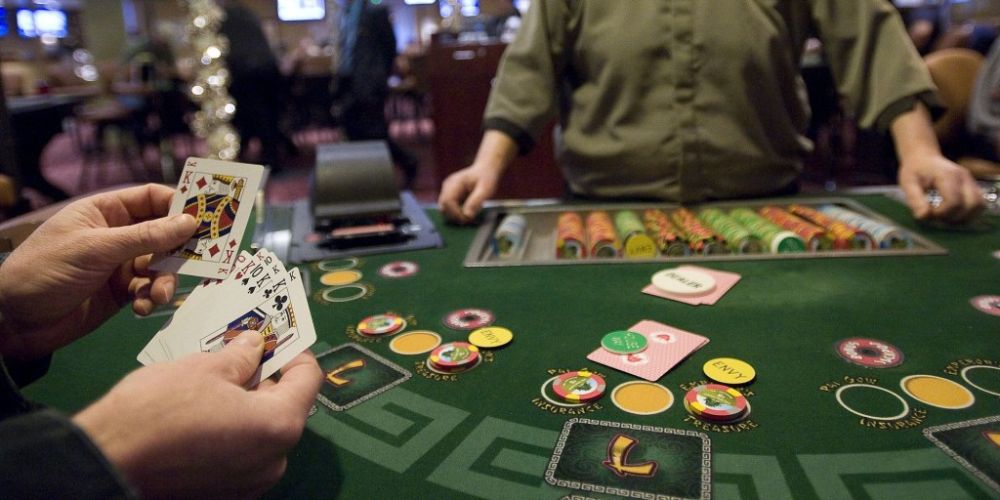Pai Gow Poker 101
Are you the kind of person that enjoys a table game experience in the casino but doesn’t like the fast action of a craps table or blackjack table? Or perhaps you’re looking for a table game that will allow you to stretch your gambling session for as long as possible giving you the opportunity to consume several free cocktails.
Let me introduce you to Pai Gow Poker, one of the slowest (and least “risky”) games in the casino.
First some interesting background: Pai Gow Poker was first dealt at Bell Card Club in California. Sam Torosian was the owner of the club and was looking for a game to revitalize his struggling casino. He combined a blend of ancient Asian influences (Chinese dominos) and good old fashioned stud poker to create a game that was an immediate success. Unfortunately, Torosian got some bad advice from his attorney, who told him that card games based on a 52 card deck could not be patented. As a result, despite the game’s widespread success, Torosian did not earn a penny from his creation. (For more on the background, check out this LA Times article).
Now for the nuts and bolts of the game. Each player is dealt seven cards which will eventually be split into two poker hands — a five card poker hand and a two card poker hand. The only rule of the game is that the five card hand must “rank” higher than the two card hand. You will place each hand in its designated position on the table. The dealer will then turn her cards over and will set her two hands in a manner required by the casino. The dealer will then compare both of her hands against your hands. If you win both, you win your bet (less a 5% commission). If you lose both, you lose your bet. If you win one hand and lose one hand, there is a push and no wager is taken. Note: If one hand exactly ties the dealer, it is considered a win for the dealer.
You can probably surmise that pushes are fairly common in this game (over 40% of the time, to be not exact). This is what keeps the game slow, not to mention the actual time it takes to deal and set the hands. Here’s a closer look at the table!
As for strategy, I definitely recommend you check out Wizard of Odds Pai Gow page. That said, this post is called Pai Gow Poker 101, so I’ll give you some beginner tips to get you started at the table.
First off, note that the game is played with a standard 52 card deck, including one joker. This joker can be used in only a set number of ways, though. In the 5-card hand, it can only be used as a “wild card” to complete a flush or a straight. Otherwise, it is considered to be an Ace. So if you don’t have 4 cards to a flush or straight, just consider the Joker to be an Ace and set your hands accordingly. The joker can also be used to represent an Ace in the 2-card hand.
So what is meant by setting the hands? This can be a little tricky at first, so it’s worth noting that most dealers will set your cards for you if you’re not sure what to do (but they will use the “house way” to do so). Once you get the hang of it, though, you’ll be happy to set your own. Let’s look at a few examples.
In the above hand, we were dealt a pair as well as an Ace and King. As we mentioned above, the 2-card poker hand must be lower ranked than the 5-card poker hand. Since we’re competing against the dealer’s two hands, we want to give ourselves the best chance of at least a push, and hopefully a win. Here, we’ll split the pair on one side and put the A-K on the other. While the pair isn’t great, the A-K will probably be competitive.
The above example was simple. Things get a little more confusing when you are dealt two pairs or a great 5-card hand, but shit for the second hand. I follow the following “two-pair” rule (developed by Mike Shackleford), which lowers the house edge from the “house way” by .04%. Generally, you should split up the two pairs (put the lowest pair in the low hand) unless:
1. The sum of the ranks is 9 or less and you have a king or ace singleton, or
2. The sum of the ranks is 15 or less and you have an ace singleton.
You might be asking what “sum of the ranks” is. Just add the value of each pair. For example a two pair consisting of 4s and 8s would have a sum of ranks of 4+8=12. Face cards and aces have a value according to their poker value, for example an ace would be highest at 14. If we had 4s and 8s plus an Ace, we’d split the pairs up, with the 4s going to the 2-card hand.
There are a ton more examples for how to set your hand on the Wizard of Odds Pai Gow strategy page, which I encourage you to check out. The good news is that once you learn some basic rules, the game is actually quite simple, and quite a bit of fun.



